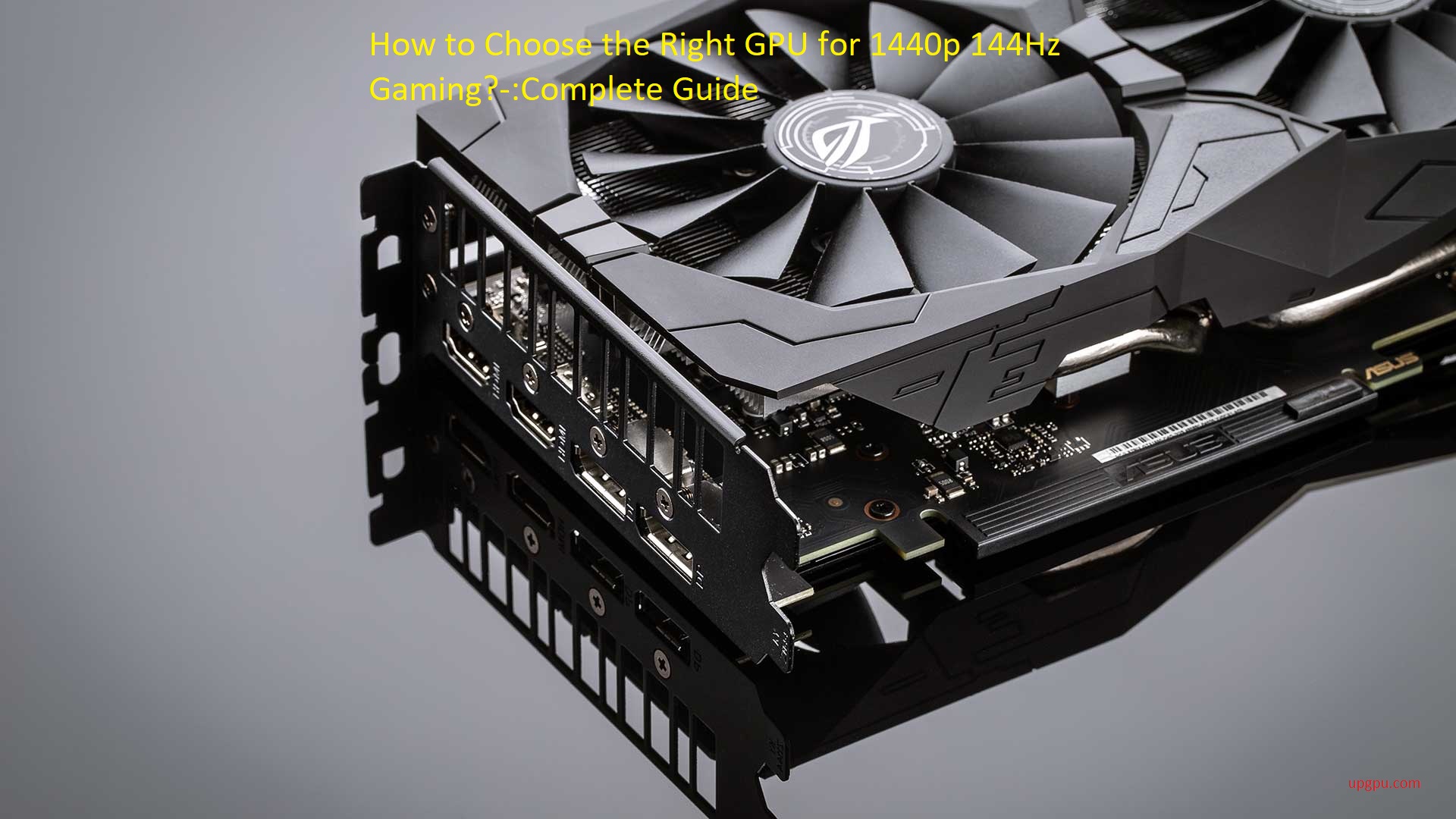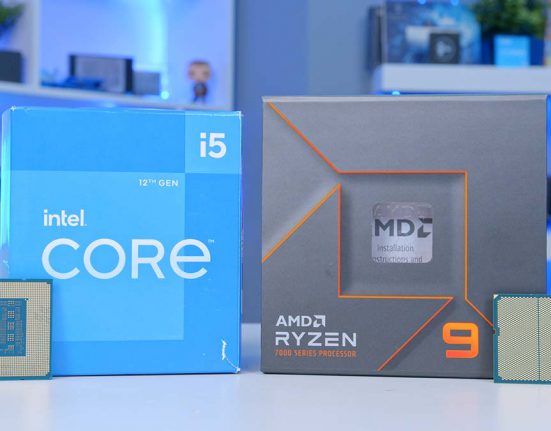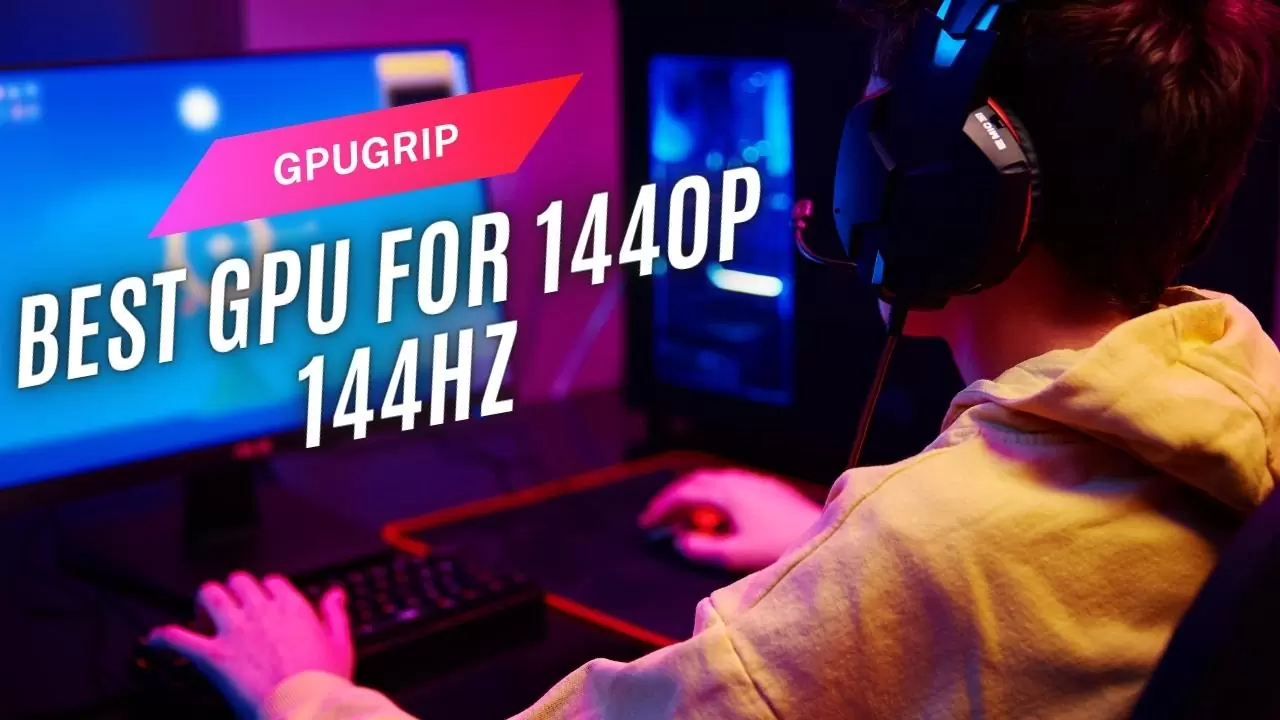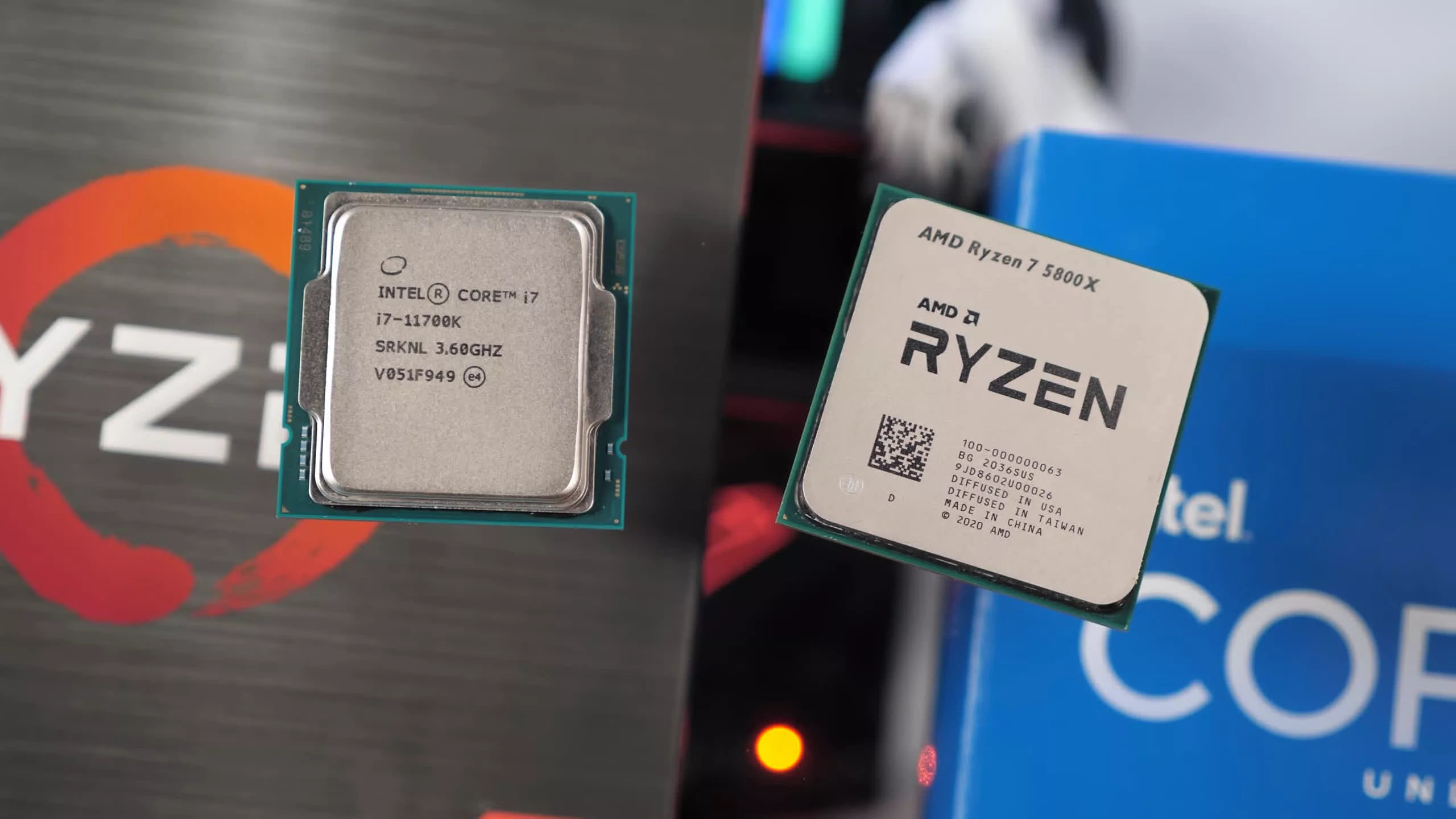Are you looking for the right GPU to power your gaming PC? Trying to find the best graphics card to play the latest AAA titles at 1440p 144Hz? Look no further!
Here’s a complete guide on how to choose the right GPU for 1440p 144Hz gaming. You’ll be playing games at ultra-high settings in no time!
When it comes to PC gaming, the graphics processing unit (GPU) determines how well your games will run. As resolutions and frames per second (FPS) continue to increase, finding the right GPU has become harder and more important. Choosing the right one for 1440p 144hz gaming can be daunting, but understanding the technology behind GPUs is key.
This guide provides everything you need to know about GPUs, ranging from the different types of chipsets to what specifications you should look for when shopping for one. With this comprehensive guide in hand, you’ll have no trouble picking out the perfect GPU for your system!

Explanation of the topic
Choosing the right graphics processing unit (GPU) for gaming is an important decision, as it is responsible for powering the games you will be playing at high frame rates. If you are trying to play games at 1440p resolution and 144Hz refresh rate, the GPU must be able to handle the demands placed on it.
The type of GPU needed for this resolution and style of playing will vary slightly depending on two factors: the type of GPU available to you and how much money you are willing to spend. Before deciding which GPU is best suited for your needs, it is important to gain an understanding of the state of GPU technology today, what options are available, and their cost associated with them. After this insight has been attained, a more informed decision can be made in regards to choosing a GPU that can properly power your 1440p/144Hz gaming experience.
Importance of choosing the right GPU for 1440p 144Hz gaming
In order to benefit from a high refresh rate and 1440p resolution, it is important to choose the right GPU for gaming. You will need a powerful graphics card to power through the most graphically demanding games at this high resolution with smooth gameplay. A good mid-range graphics card should be able to reach 144Hz easily, while high-end GPUs can push up to 200 FPS or more for competitive titles like Counter Strike: Global Offensive (CS:GO). It is essential that players consider their budget and performance requirements when choosing the right GPU for 1440p 144Hz gaming.
When making your decision, you should also take into account overclocking capabilities (if you plan on overclocking your GPU) as well as compatibility with other components such as your motherboard and graphics card interface. It’s also important to research potential power consumption figures of different cards in order to ensure that you have adequate cooling/power supply setup in place so that your system can handle the increased load due to increased resolution and refresh rate settings. This includes checking out latest driver releases and making sure they are up-to-date. With all these factors in mind, finding out which GPU would best meet your needs for 1440p 144Hz gaming should be relatively straightforward!
Understanding 1440p 144Hz Gaming

1440p 144Hz gaming is a demanding experience, as it pushes GPUs to the limits of their power utilization. When choosing the right GPU for this purpose, you will need to consider its specs and performance.
The resolution itself of a 1440p 144Hz gaming PC typically consists of 2560 x 1440 pixels, displaying an image with more detail and clarity than that of either 1080p or 4K displays. You likely won’t need as much power for a 1440p 144Hz monitor compared to a 4K Ultra HD monitor due to the lowered pixel count.
However, keep in mind that for high refresh rates at high resolutions such as this, you’ll need both powerful hardware and capable software – meaning that when choosing graphics cards for your PC, you should focus not only on its specs but also on how well optimized its driver’s performance is with more modern games like Fortnite.
You should also pay attention to other components such as storage and RAM when building a gaming PC geared towards 1440p 144hz gaming as they can greatly affect game performance. A good combination between all these components can translate into smooth gameplay even at hardcore settings like Ultra or High preset levels in popular titles like Call of Duty: Warzone and Apex Legends.
Definition of 1440p resolution and 144Hz refresh rate
1440p resolution, also known as 2K resolution or Quad High Definition (QHD), is a display resolution that measures 2560 x 1440 pixels. This resolution occupies the middle ground between traditional 1080p monitors and ultra-high 4K monitors, making it an ideal balance of quality and performance.
144Hz refresh rate monitors are displays that can be updated up to 144 times per second. This is more than double the typical refresh rate available on most laptop and desktop displays, which generally range from 60Hz to 75Hz. A higher refresh rate results in smoother animation with less visible “tearing” and stuttering in fast-paced games. When you combine a high resolution screen like 1440p with a high refresh rate like 144Hz, you get an incredibly immersive experience that allows you to see more detail and respond faster than ever before.
In order to achieve optimal gaming performance with these types of displays, you need a powerful graphics card that can handle all of the graphics processing needs for 1440p at 144 frames per second or higher. The type of GPU and other components you choose will determine how well your games look and play on your system.
Benefits of 1440p 144Hz gaming

1440p 144Hz gaming not only offers a higher level of detail but also allows you to enjoy an incredibly smooth gaming experience, eliminating any tearing and stuttering due to a refresh rate that is significantly higher than the 60Hz standard. Games look and feel noticeably better with a high refresh rate, giving you better control and accuracy during intense battles.
In addition to these advantages of 144 Hz refresh rates, 1440p delivers superior image quality thanks to its higher resolution – which means sharper image details and better viewing angles. When it comes to high-end gaming, 1440p 144Hz offers an optimal balance between picture clarity and snappy performance while still allowing you to enjoy beautiful graphics with amazing fidelity.
Finally, opting for a 1440p 144Hz setup instead of a 4K gaming setup can help save you money since 4K monitors are still relatively expensive and require more powerful hardware for smooth performance. As such, 1440p can be considered an ideal mid-ground for gamers wanting the best visuals without having to invest in expensive hardware. Being able to get close enough to 4K visuals without the hefty price tag makes 1440p 144Hz the superior choice for many gamers who want crackling performance and excellent image reproduction at an affordable price point.
Recommended GPUs for 1440p 144Hz Gaming
When getting a GPU for 1440p 144Hz gaming, consider how good the performance of the graphics card is. The main criteria – and the best option to look for – is a card that delivers at least 60 FPS in demanding games. Generally, any GPU past the mid-range range which you select should be capable of playing most modern titles at 1440p 144Hz medium or high settings.
The key components that decide which GPUs you should choose are:
- VRAM: A minimum of 4GB (preferably 6GB) is preferred as higher VRAM capacity ensures that the more demanding games can run better as you increase in resolution and/or quality settings.
- Bandwidth: For high refresh rate gaming, wide memory bandwidth cards are preferred since they are able to deliver superior performance when compared to cards with lower memory bandwidth specs.
- Architecture: This defines both power efficiency and performance; newer cards have proven to be more powerful per watt than earlier recipes of GPUs generations.
- Cooling System: To maintain thermals under load and sustain long hours of gaming, it’s important to select a GPU with good cooling solutions such as efficient fans and other technologies meant to boost cooling such as vapor chamber etc.
By considering all these factors when selecting a GPU, you can ensure that it will not only help you deliver smooth frame rates and a high level of performance but also do so while offering consistent cool temperatures while doing so.
High-End GPUs

High-end GPUs are recommended for gaming at 1440p@144Hz, as for this type of resolution you will need to consider buying one of the latest and most powerful GPUs available on the market. One of the main components you should take into consideration when shopping for high-end GPU is detail levels in games that you can run on your system and if it can handle them perfectly at 144Hz.
The general consensus is that some of the best GPUs available today include AMD’s Radeon RX 5700 XT, Nvidia RTX 2080 Super and Nvidia RTX 2070 Super cards, although these could be expensive depending on where you live. Other alternatives may include AMD’s Radeon RX Vega 64 or Nvidia GTX 1080Ti cards if they are affordable in your area.
However keep in mind that if you don’t have a powerful CPU to go along with high-end GPU your system won’t run games at their best settings and times during intensive gaming might not be optimal either.
Mid-Range GPUs
Mid-range GPUs are generally suitable for gaming at 1440p resolution as well as 144Hz refresh rates. Some cards in this category may be able to push higher frame rates, but they will often require some settings compromising. Mid-range GPUs usually come with 6GB or 8GB of GDDR6 memory, which is ample for most games. It’s important to consider the total amount of memory available when comparing cards — some may have 4GB, while others may have more than 8GB, so be sure to factor this into your decision making process.
The mid-range segment mostly consists of Nvidia ‘Super’ or AMD ‘XT’ variants and it can often be a difficult task picking the best GPU from this category:
Nvidia GTX 1660 Super: This is an excellent mid-range card that has enough performance for gaming at 1440p and 144Hz. It comes with 6GB of GDDR6 memory and offers good value for money.
AMD RX 5700 XT: This is an excellent card for gaming at 1440p and 144Hz and comes with 8GB of GDDR6 memory. It also features excellent power efficiency so it won’t consume too much power compared to other cards in its class.
Nvidia RTX 2060 Super: This GPU offers excellent performance with 8GB of GDDR6 memory, making it ideal for playing games at 1440p and 144Hz (or even higher). However, it does come with a significantly larger price tag than the other GPUs in this section so you will need to take that into consideration when deciding which GPU is right for you.
Budget-Friendly GPUs
Gigabyte GeForce GTX 1660 OC 6G
If you have the budget to spend only up to $215, then you should go for the Gigabyte GeForce GTX 1660 OC 6G. It offers flawless performance on 1440p with high settings if you’re not into too graphic intensive games. You can run your games at ultra settings on 1440p as well but don’t expect too great results.
At under $200, no other GPU can offer this great Ray Tracing technology like this card does. The 6 GB GDDR5 memory and 1408 cores are enough to get it through some rigorous gaming sessions set at 144 Hz with maxed out settings on average for many recently released games of this generation. This card has a power draw of 120 W which means it doesn’t require additional PCI-E power connectors.
Comparison of Recommended GPUs
Choosing the right GPU for 1440p 144Hz gaming can be a challenging task. In this section, we’ll compare the top recommended GPUs in different categories. Depending on your budget and planned game titles, you can pick the best GPU that fits your build.
High-End GPUs:
-Nvidia GeForce RTX 2080 Ti: The RTX 2080 Ti is Nvidia’s flagship graphics card and offers a unique combination of power and features not found in any other GPU. It features the full Tensor Core technology for AI deep learning support as well as 11GB of GDDR6 VRAM with a whopping 4352 CUDA cores running at 1545MHz Boost Clock speed and 1635MHz memory clock speed. This level of performance will allow gamers to play current AAA games at ultra settings at 1440p resolution with frame rates above 150 FPS at all times.
Mid-Range GPUs:
-AMD Radeon RX 5700 XT: The RX 5700 XT is AMD’s mid-range graphics card that packs 8GB of GDDR6 VRAM, 2560 Stream processors running at 1755MHz Boost Clock speed That and 1875MHz memory Clock Speed which is capable of delivering great performance in current popular AAA titles like Fortnite, Apex Legends and CS:GO at 1440p resolution with frame rates above 110 FPS.
Budget GPUs:
-Nvidia GeForce GTX 1660 Super: Despite being an entry-level GPU released back in 2019, The GTX 1660 Super can still provide decent performance if you are looking to game at 1440p resolution but don’t want to spend too much money on it. It features 6GB GDDR6 VRAM with 1408 CUDA cores clocked up to 1530Mz Boost clock speed with 1785 MHz memory clock speed which will allow gamers to play popular esports titles such as Valorant or Overwatch comfortably above 100 FPS all times while sacrificing the quality settings in some cases.
Performance benchmark comparison
When it comes to choosing the right graphics card, it’s important to take into account performance benchmarks. This can be done quite easily by comparing performance reviews and ratings for various GPUs. Performance benchmarks provide us with an all-encompassing, objective look at how each GPU fares in everything from gaming to general PC usage.
When it comes to 1440p 144Hz gaming, frame rate is the most important factor and a higher frame rate will result in smoother gameplay. Hence, most gamers would rather concentrate on how well a GPU can run at these settings than any other details such as power consumption or heat output.
A good way to quantify performance for this purpose is by looking at frames per second (FPS) as shown on various benchmark websites such as techreport.com or gpuinfo.net. FPS should be tested both at normal settings and maximum settings when available, since some games may require lower settings than others due to complexity or optimization issues of the game engine itself. A higher FPS will generally indicate better performance when running 1440p 144Hz gaming software or games, so be sure to take FPS into account when considering which GPU best fits your needs!
Price comparison
When it comes to building your gaming rig, your budget can sometimes be the decisive factor. With so many different prices of GPUs available, it can be difficult to decide which one is the best value for money. The list below shows a range of GPUs with similar specs and prices to help you compare and make an informed decision.
For 1440p 144Hz gaming, mid-range GPUs are typically recommended. These include the AMD Radeon RX 5700 XT, GeForce RTX 2060 Super and the GeForce RTX 2070 Super. Prices may vary slightly depending on where you buy from, but all should offer good performance for gaming at 1440p 144Hz resolution:
AMD Radeon RX 5700 XT: This GPU delivers excellent performance at a moderate price point and is ideal for 1080p 144Hz or 1440p 144Hz gaming. Expect to pay around $400 – $450 USD for this GPU.
GeForce RTX 2060 Super: This GPU provides respectable performance for 1440p high refresh rate gaming and costs about $400-$450 USD.
GeForce RTX 2070 Super: This GPU delivers good performance at a slightly higher price point than the other two models. You can expect to pay around $500 – $550 USD for this one.
Conclusion
The choice of GPU for 1440p 144Hz gaming depends on the specific user needs and budget. It is important to choose an appropriate GPU based on both performance and power consumption, since having a suitable balance between these two is essential for achieving good results. Ultimately, it comes down to the individual user’s preferences and budget, but with the knowledge provided in this guide, you should have enough information to make an informed decision.
If you are after a smooth gaming experience in 1440p at 144 Hz, then any one of the GPUs mentioned in this guide will deliver great performance. However, if you want to get the best out of your GPU then investing in quality components such as monitors and power supplies is also important. Finally, don’t forget to take into account thermals when trying to decide on a suitable model; Powerful GPUs can generate lots of heat and require adequate cooling solutions so that they don’t get damaged or slow down due to excessive temperatures.
Overall, picking out a suitable Graphics Processing Unit can seem daunting at first but hopefully this concise guide has enabled you to gain some insight into how GPUs work and which ones may be better suited for your needs.
FAQs
What PC specs do I need for 1440p 144Hz gaming?
To achieve smooth 1440p gaming at 144Hz, you will need a powerful CPU and GPU combination, preferably an Intel Core i7 or AMD Ryzen 7 processor, and at least an Nvidia GeForce RTX 3070 or AMD Radeon RX 6800 XT graphics card. Additionally, you should have at least 16GB of RAM and a fast SSD for faster load times.
What GPU should I get for 144Hz monitor?
For a 144Hz monitor, you should consider getting a high-end graphics card such as the Nvidia GeForce RTX 3070 or AMD Radeon RX 6800 XT to ensure smooth and responsive gameplay. These GPUs are capable of delivering high frame rates at 1440p resolution, which is ideal for a 144Hz monitor.
Is RTX 3060 enough for 1440p gaming?
Yes, the RTX 3060 is capable of running games at 1440p resolution, but it may struggle to deliver consistently high frame rates on some demanding games. You may need to lower some graphics settings to maintain smooth gameplay.
Should I get 3070 or 3080 for 1440p gaming?
Both the RTX 3070 and 3080 are capable of delivering smooth 1440p gaming performance. However, the RTX 3080 is more powerful and can handle more demanding games at higher frame rates and graphics settings. If you have the budget for it, the RTX 3080 is the better option.
What GPU is the sweet spot for 1440p?
The sweet spot for 1440p gaming is currently the Nvidia GeForce RTX 3070 or AMD Radeon RX 6800 XT graphics cards. These GPUs offer excellent performance at 1440p resolution, delivering high frame rates and excellent graphics quality.
Can RTX 3080 run 1440p 144hz?
Yes, the RTX 3080 is more than capable of running games at 1440p resolution with a 144Hz refresh rate. It can deliver high frame rates even on the most demanding games at ultra graphics settings.
What is a good FPS for 1440p?
A good FPS for 1440p gaming is around 60 to 144 FPS, depending on the refresh rate of your monitor. If you have a 144Hz monitor, you should aim for a consistent 144 FPS to fully take advantage of the monitor’s refresh rate.
Does 1440p use more CPU or GPU?
1440p gaming places a heavier load on the GPU than the CPU. While a powerful CPU is necessary to avoid bottlenecking, the GPU is the most important component for achieving high frame rates and excellent graphics quality at 1440p resolution.
Is RTX 3060 good for 1440p 144hz?
The RTX 3060 is capable of running games at 1440p resolution with a 144Hz refresh rate, but it may struggle with some demanding games. You may need to lower some graphics settings to maintain smooth gameplay.
Is 3060 overkill for 1440p?
No, the RTX 3060 is not overkill for 1440p gaming. While it may not be able to handle the most demanding games at ultra graphics settings, it can deliver smooth and responsive gameplay on most games at high to medium graphics settings.
See More
- Best gpu for plex transcoding 2023
- Best gpu for ravencoin 2023
- Best GPU for Ryzen 3 3200g 2023
- Best GPU for Ryzen 5 1600 2023
- Best GPU for Ryzen 5 2600 2023

